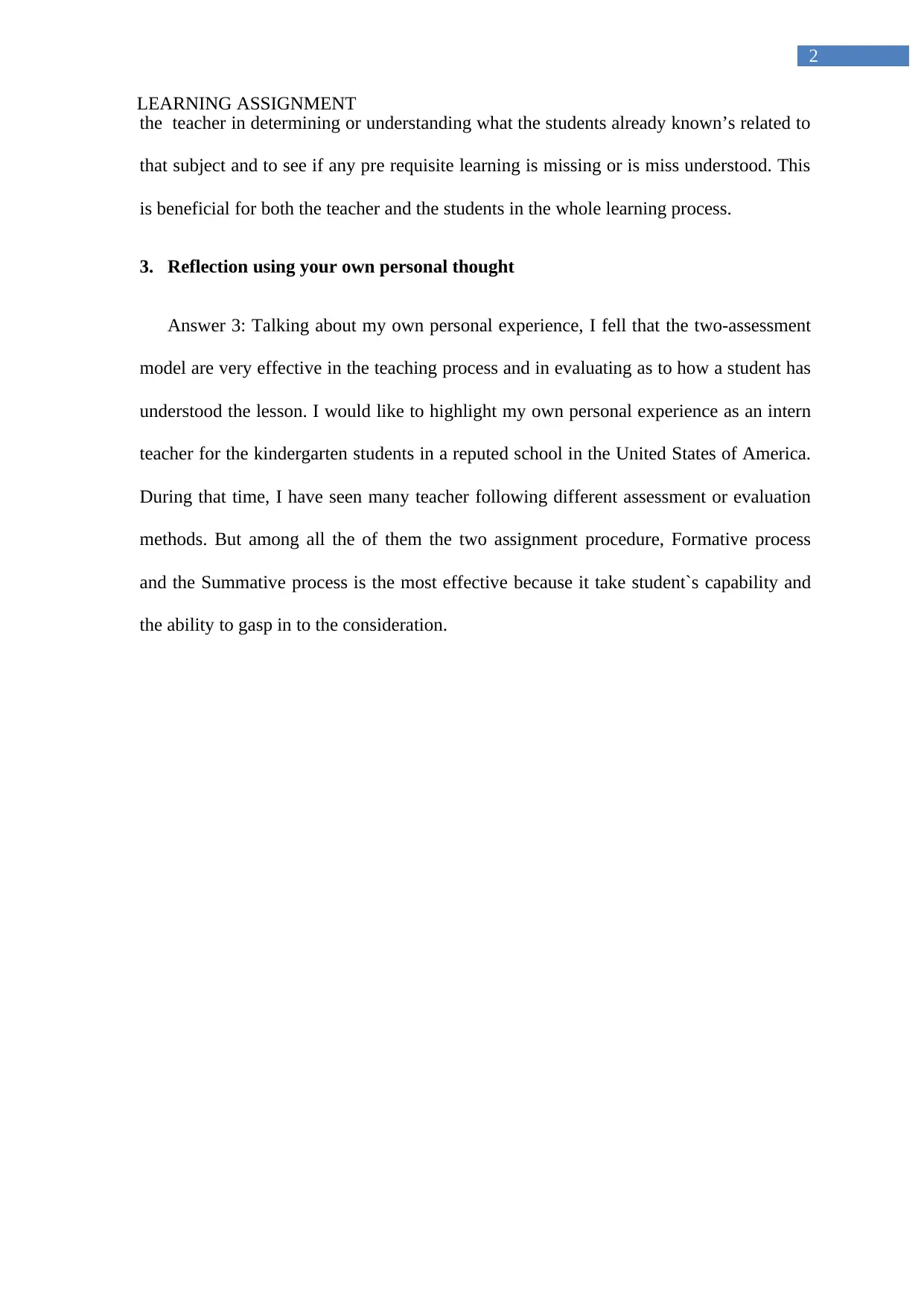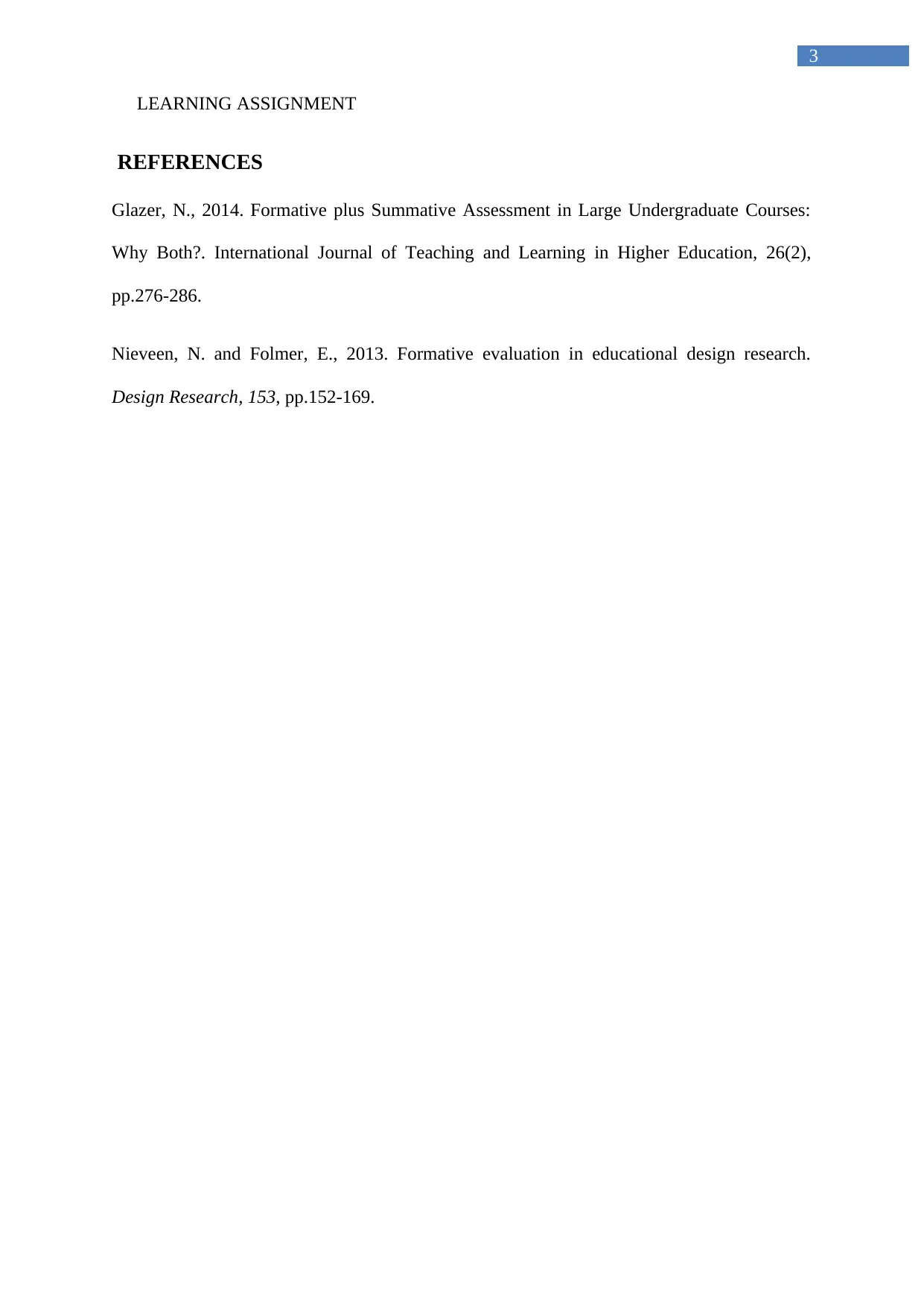Assessment in Education: Homework Assignment, Module 1
VerifiedAdded on 2022/11/09
|4
|556
|479
Homework Assignment
AI Summary
This assignment analyzes the article on "Types of Assessment," focusing on formative and summative assessment methods. The student identifies key takeaways, including the importance of both assessment types in gauging student understanding throughout the learning cycle. The "AHA moment" highlighted is the use of pre-assessment to gauge students' prior knowledge. The student reflects on their personal experience as an intern teacher, emphasizing the effectiveness of formative and summative assessments in adapting teaching methods to students' capabilities. The assignment covers differentiated instruction, assessment purposes, and the use of assessment data to inform teaching practices. The student provides examples and personal insights related to the reading and experience.
1 out of 4











![[object Object]](/_next/static/media/star-bottom.7253800d.svg)